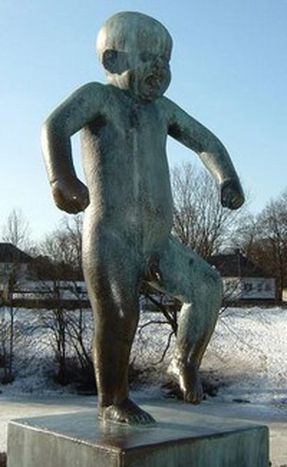
Oslo, a city that deserves a second look
Published on
Translation by:
 sarah turpin
sarah turpin
The centre of Oslo, annual host of the Nobel Peace Prize ceremony, emanates a dilapidated charm. But it is in its eastern areas, with their rich cultural diversity and young, largely student population, that Oslo comes to life.
It is not the expected idyllic Fjords that initially welcome the newcomer to Oslo; instead, one is greeted by the junkies hanging around the central train station and the prostitutes along the historic Akershus fortifications. From the castle in the touristy centre of Oslo, you are no more than a stone’s throw away from the recently opened Nobel Peace Centre in the renovated entrance hall of Oslo’s old Western train station; here, human rights are the focus. But even shorter than the walk to the noble exhibition centre, one could cynically remark, is the distance from the luxury cruise ships to the young women dispersed around the fortifications, many of whom are likely the victims of international human trafficking.
Oh Europe!
Almost twenty years have passed since the German writer Hans-Magnus Enzensberger described Oslo’s characteristic run-down charm in his collection of essays entitled Oh Europe!, a charm that so clearly reveals itself in streets such as Skippergata, the street connecting Oslo’s harbour with its central train station. Still today, the street offers an air of decay, but now in two ways, as only the misery of the people hanging around Skippergata seems to exceed the sad condition its houses are in. From here, it is only a few steps to the point where Skippergata crosses Karl Johan, Oslo’s main shopping street, once again evoking a brutal sense of irony: the sort of misery that charity workers show passers-by in carefully organised folders could just as well be observed in Skippergata or around Akershus.
Beyond the trolls
But the reason Oslo’s charm cannot be found in its centre is because it has been displaced into the eastern part of the city, which used to be a working class district. Grünerløkka and Torshov, still considered something of an insider’s tip, in particular are the areas where Oslo come to life in the spring and summer. This is where you feel the true pulse of Oslo, for instance in one of its many parks, in cafés and pubs, or simply by taking a stroll through one of the old streets or along the banks of the river Akerselva. You will be amazed to find that a completely new city seems to be opening up here, totally different from the elegant and imposing quarters in the western part of town, let alone the exclusive mansions on the Holmenkollen hill. It is most likely these old workers’ distircts in eastern Oslo that you will have in mind when thinking about the soul of Oslo; a soul that most certainly does not express itself in tourist attractions such as the sculpture park of Gustav Vigeland or the ski-jump at Holmenkollen. Beyond the world of souvenir sweaters you’ll discover a city that has very little to do with the cliché of trolls and fjords, but that expresses so much more about the state of contemporary Oslo and its people. More is going on than first meets the eye.
PRACTICAL INFORMATION
Language
Norwegian is not an exceptionally difficult language to learn, especially if you already speak another Scandinavian or Germanic language. But you’ll always manage speaking English.
Universities
Apart from the University of Oslo, there are other smaller universities such as the Norwegian Music Academy or the Norwegian School for Sports Science.
An original place
So good it’s almost cliché: Blå is not only a pub but also a beer garden and concert hall on the banks of the Akerselva. Here you can hear the latest tunes from the very innovative Norwegian music scene.
To do
Tobogganing at Holemkollen. Having fun is the best medicine to combat the darkness of the Norwegian winter.
Not to do
Don’t wave an EU flag in the streets on May 17, the National Celebration Day. You won’t make yourself any friends!
Accommodation
The downside of Oslo is that rent is very expensive. The best thing to do is to look for adverts on the noticeboards at the University of Oslo.
Translated from Oslo - eine Stadt für den zweiten Blick


